Nobility of the World
Volume VIII - Denmark
Nobility in Denmark was a leading social class until
the 19th or 20th century. Danish nobility exists yet and has a recognized status in Denmark, a monarchy, but its real privileges
have been abolished. Danish nobility is divided in two categories: ancient nobility (Danish: uradel) and created nobility
(Danish: brevadel). More informal categorization is between high and lower nobility (Danish: højadel, lavadel). Today,
around 200 noble houses with an explicit title (baronial, comital, and so forth) yet continue. Ancient nobility refers to
those noble houses that are known from the era before the Danish reformation, and created nobility are those houses that received
their rank through an explicit patent when they first were elevated to nobility. Families of old Lord High Councillors of
Denmark, and houses endowed by a title after 1660, absolutism's beginning, are regarded as high nobility of Denmark.
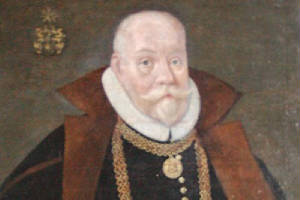
The Medieval Nobility of Denmark
A striking feature
has been the close ties medieval Danish magnate families had with German (Thuringian, Lower-Saxon, etc.) counts, apparently
regarded more or less as their equals: for example in 13th century, there are several marriages between Danish magnate families
and German counts in each generation. As a result, the ancestry of countess Kristina of Gleichen, the mother of Günther
of Schwarzburg, German King, happens to be almost totally Danish.
* Several counts of Orlamünde, Regenstein, Gleichen and Everstein families settled
to Scandinavia, and became for example High Councillors, and a couple of them Lord High Constables of Denmark. From the well-known
marriage of Sofia Valdemarsdatter of Denmark with Sigfrid, count of Orlamünde, descends a wide posterity both in
Denmark and in Germany.
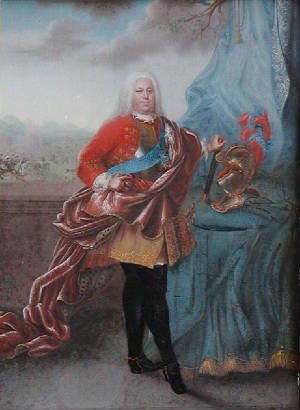
* many branches of the counts of Holstein
became relatives with branches of the Danish royal dynasty, and occasionally were numbered among highest in Denmark. During
the reign of Christopher II of Denmark and early reign of Valdemar IV of Denmark, various counts of Holstein held almost all
fiefs in Denmark. Particularly the Holsteins tended to ally with the Abel branch of the royals, who held the duchy of Southern
Jutland, neighboring Holstein. Ultimately, in late 14th century, the Rendsborg branch of the House of Holstein inherited the
south-Jyllander duchy (henceforward known as Duchy of Sleswick) as Danish vassals. Adolf VIII of Sleswick and Holstein was
actually offered the Danish royal throne in 1448, and after his refusal, his nephew Christian I received it.

* The family of Podebusk, originally
relatives of earliest princes of Rügen, became almost totally Danish in 14th century, and their most prominent member
was Henning Podebusk, the mighty Lord High Justiciar of Denmark during king Valdemar IV and the latter's daughter, the union-queen
Margaret of all Scandinavia. After the 16th century, yet one branch (the Kjoerup branch) of the Podebusk remained in Denmark
and belonged to the country's high nobility.
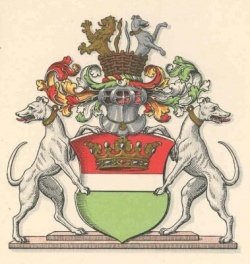
Chieftains of the so-called Galen
clan, magnates in Scania and in Zealand, were among most frequent in Denmark to seal ties with North-German and Wendic princes
by marriages, as shown in their lineages , and by descents from a couple of their daughters married to princes in southern
shores of the Baltic:
* Descendants of Kristina (från
Skåne) at Genealogics
* Descendants of Margareta (från Skåne) at Genealogics
The Danish Noble Titles
* Hertug
- Duke
* Lensgreve - Feudal Count
* Greve - Count
* Lensbaron - Feudal Baron
* Baron - as in English.
Feudal Count and Feudal Baron are the definitions
of the highest noble rank in Denmark. The rank was introduced in 1671 with the creation of counties and baronies. A Feudal
Count is a count who is enfeoffed with a county by the Danish king.
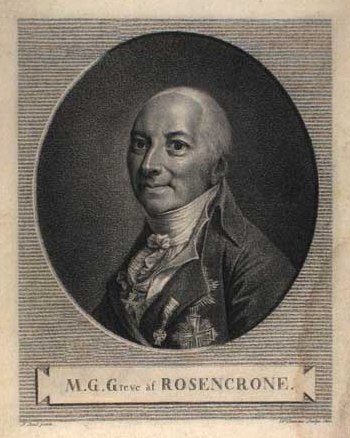
The Ducal Houses
There are two families with a Danish title of duke:
* Dukes of Slesvig (Hertug af slesvig): originally, descendants of Gerhard III, Count of
Holstein, who was granted the Duchy of Jutland, then taken back, but title and Slesvig recognized in 1386; this title was
succeeded in 1459 through a cognatic inheritance by the House of Oldenborg, including its branches of Slesvig-Holstein-Gottorp
and Slesvig-Holstein-Sonderborg.
* Duke of Glücksbierg
(Hertug af Glücksbierg): primogeniture within the French family of dukes of Decazes

The Danish Noble Families
There are two primary periodical reviews of Danish nobility:
* Danmarks Adels Aarbog (DAA), published by Dansk Adels Forening, since 1884. It publishes
covering genealogies of currently living, around 725 Danish noble families. Additionally, ancestry charts published in its
editions, have reported c 200 extinct houses. Content register of Danmarks Adels Aarbog: http://www.genealogi.no/kilder/DAA/DAA-reg.htm
* Dansk Adelskalender
Following
families are listed in 1878 Dansk Adelskalender, published by F. Krogh:
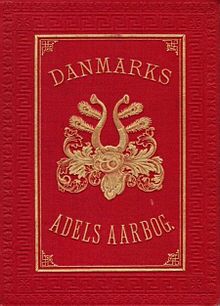
A - C
* Abrahamson
* Adeler
* Ahlefeldt
* Ahlefeldt-Laurvigen
* Arenstorff
* Asp-Persson
* Astrup
* Bang
* Banner
* Bardenfleth
* Barnekow
* Barner
* Bartholin
* Beck
* Benzon
* Berger
* Berner
* Berner-Schilden
* Berregaard
* Bertouch
* Bielke
* Bille-Brahe
* Bille
* Blixen-Finecke
* Blücher-Altona
* Bonde
* Bonde-Wadenstierna
* Bornemann
* de Bretteville
* Bretton,
* Brinck-Seidelin
* Brockdorff
* Brockenhuus-Schack
* Brummer
* Buchwald
* Bülow
* Carlsen
* Castenschiold-Castenskjold-Grevenkop-Castenschiold
* Cederfeld-Simonsen
* Charisius
D - H
* Dannemand
* Danneskjold-Samsø
* Dirckinck-Holmfeld
* Düring-Rosenkrantz
* Daa
* Eberlin,
* Eiben,
* Ellbrecht
* Fabritius de Tengnagel,
* Falkenskiold,
* Falsen,
* Fischer
* Fischer-Benzon,
* Flindt,
* Fogh,
* Folsach
* Fontenay
* Fønss
* Gähler
* Gersdorff
* Gyldenfeldt
* Güldencrone
* Güntelberg
* Halling,
* Harbo
* Harbou,
* Hauch,
* Hambro,
* Haxthausen,
* Hedemann,
* Hegermann-Lindencrone,
* Heintze-Weissenrode,
* Herbst,
* Hofman-Bang,
* Hoff,
* Hoffman,
* Holk,
* Holck,
* Holstein,
* Holsten, von Holsteinborg
* Hoppe,
* Huth,
*
Høeg,
* Høegh-Guldberg,
J - M
* Jermiin,
* Jessen,
*
Irgens-Bergh,
* Juel,
* Juul,
* Kaalund,
* Kaas Kaas (Sparre-Kaas) Kaas (Ormdruplinjen),
* Clauson-Kaas,
* Klauman,
* Klöcker,
* Knuth,
* Koefoed,
* Kolderup-Rosenvinge,
* Krabbe,
* Kretzschmer
* Krieger,
* Krogh,
* Lasson,
* Lerche,
* Leth,
* Leuenbach,
* Levetzow - Levetzau,
*
Lichtenberg,
* Lillienskjold,
* Linde,
* Lindholm,
* Linstow,
* Lowzow,
* Lütken,
*
Lüttichau,
* Lützau -Lützow,
* Løvenbalk,
* Løvenfeldt,
* Løwenhielm,
* Løvenskiold,
* Løvenstierne,
* Løvensøn,
* Løvenørn,
* v. Der Maase,
* Michaelsen,
* Moldrup,
* Moltke,
* Moltke-Bregentved,
* Moth,
* Munthe af Morgenstierne,
* Münnich,
* Mylius,
* Neergaard,
* Nutzhorn,
O - S
* Obelitz,
* Oldenburg,
* Oppen-Schilden,
* Den v. Ostenske Stiftelse,
* Oxholm,
* Petersdorff,
* Plessen-Scheel-Plessen,
* Pogwisch,
* Raben -Raben-Levetzau,
* Rantzau,
* Reedtz,
* Reedtz-Thott,
* Reventlow,
* Roepstorff,
* Rosenkrantz,
* Rosenørn,
* Rosenørn-Lehn,
* Rosenvinge,
* Ross,
* Ræder,
* Scavenius,
* Schack-Schackenborg,
* Schaffalitzky de Muckadell,
* Scheel-Skeel,
* Schimmelmann,
* Schmettau, v. Schmidten,
* Scholten,
* Schulin-Schulin-Zeuthen,
* Sehested,
* Sèrène d'Acquèria,
* Sperling,
* Späth,
* Sponneck,
* Stampe,
* Stemann,
* Stibolt,
* Stiernholm,
* Stockfleth,
* Svanenskjold,
T - Z
* Teilmann,
* Thurah,
* Thygeson,
* Tillisch,
* Trampe,
* Trolle-Wadenstierna
* Treschow,
* Thott,
* Undall
* Urne
* Voss,
* Wadenstierna,
* Wardenburg,
* Wedel,
* Wedel-Heinen,
*
Wedell-Wedellsborg,
* v. Westh,
* Wichfeld,
* Wilster,
* Wind-Vind-Krag-Juel-Vind-Frijs,
* Zeppelin,
* Zytphen-Adeler
References
1.
^ Ancestors of countess Kristina of Gleichen at Genealogics
2. ^ Descendants of Sigfrid, count of Orlamünde at Genealogics
3. ^ Descendants of Podebusk at Genealogics
4. ^ Descendants of Sune Ebbesen (Hvide-Galen),
Lord of Knardrup at Genealogics

